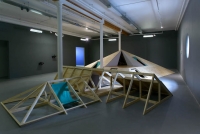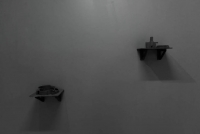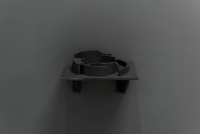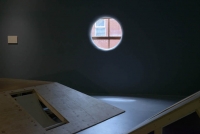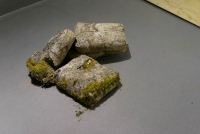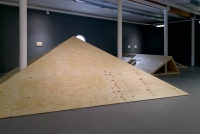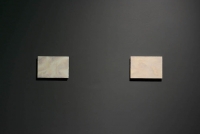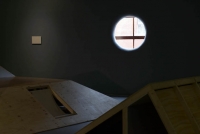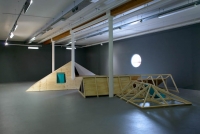Architecture of Change
Void Derry
26th May - 21st July
ASSEMBLE - Andreas von Knobloch - Tom Watt - Tanad Williams - Amanda Mostrom
Curated by Mary Cremin
Video by artist Mara Cavalli
Architecture of Change
ASSEMBLE I Andreas von Knobloch I Tom Watt I Tanad Williams I Amanda Mostrom
Mary Cremin
26 May 2018
‘Architecture of Change’ explores urban ecology and notions of play through sculpture, installation, film, talks, and workshops. As a city, Derry has a unique history, demonstrated through its archaeological sites. In more recent times it has shifted from being a mercantile, industrial city to its present ‘critical’ phase. It has the potential to be something other than the homogenous cities which have become the norm throughout the globalised world where public space becomes restricted and movement through the city becomes choreographed through design and function. Retaining the significant character of the city is important to maintaining the sense of place. What we are exploring is the Derry ‘city of the future’ and how that is imagined through ideas of play, green spaces, urban design and architecture.
Void are delighted to welcome ASSEMBLE as part of this exhibition – whose working practice seeks to address the typical disconnection between the public, and the process, by which places are made. ASSEMBLE will be exhibit a filmic work that explores the wider conversation around the importance of play within an urban context. ASSEMBLE champion a working practice that is interdependent and collaborative, seeking to actively involve the public as participant and collaborator in the realisation of their work. Andreas Von Knobloch, Tanad Williams and Tom Watt will work in collaboration to produce a site-specific installation for the gallery responding to the architecture and design of the Derry city walls, disused military sites, and the structure of Grianan of Aileach Fort. Amanda Moström’s work is centred on notions of play and the boundaries around the types of responses that art engenders in its audiences. Play can be subversive and potentially liberating, creating new social dynamics both within the gallery space but more importantly within the urban sphere.
The speed with which we witness the transformation of our urban environments is a response to the increasingly urbanised world economy. The city has always had a distinctive role as a centre of business, labour and consumption patterns but it is also a point of social exchange and play.
Photos courtesy of Paola Bernardelli.


